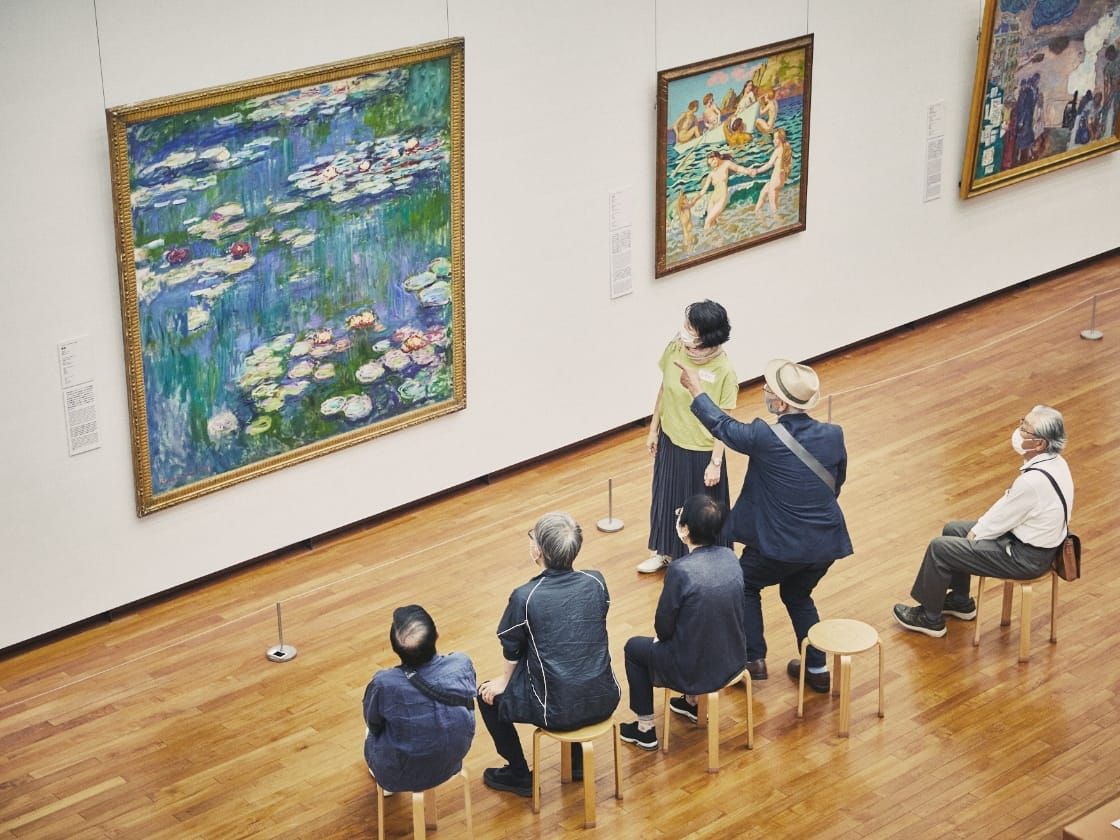My Favorite Piece: Collection Spotlight Vol. 4 Tochigi Prefectural Museum of Fine Arts: Alfred Sisley, Winter Sunset (The Seine at Saint-Mammès), c.1882–83
A conversation with Curator Buseki Sae
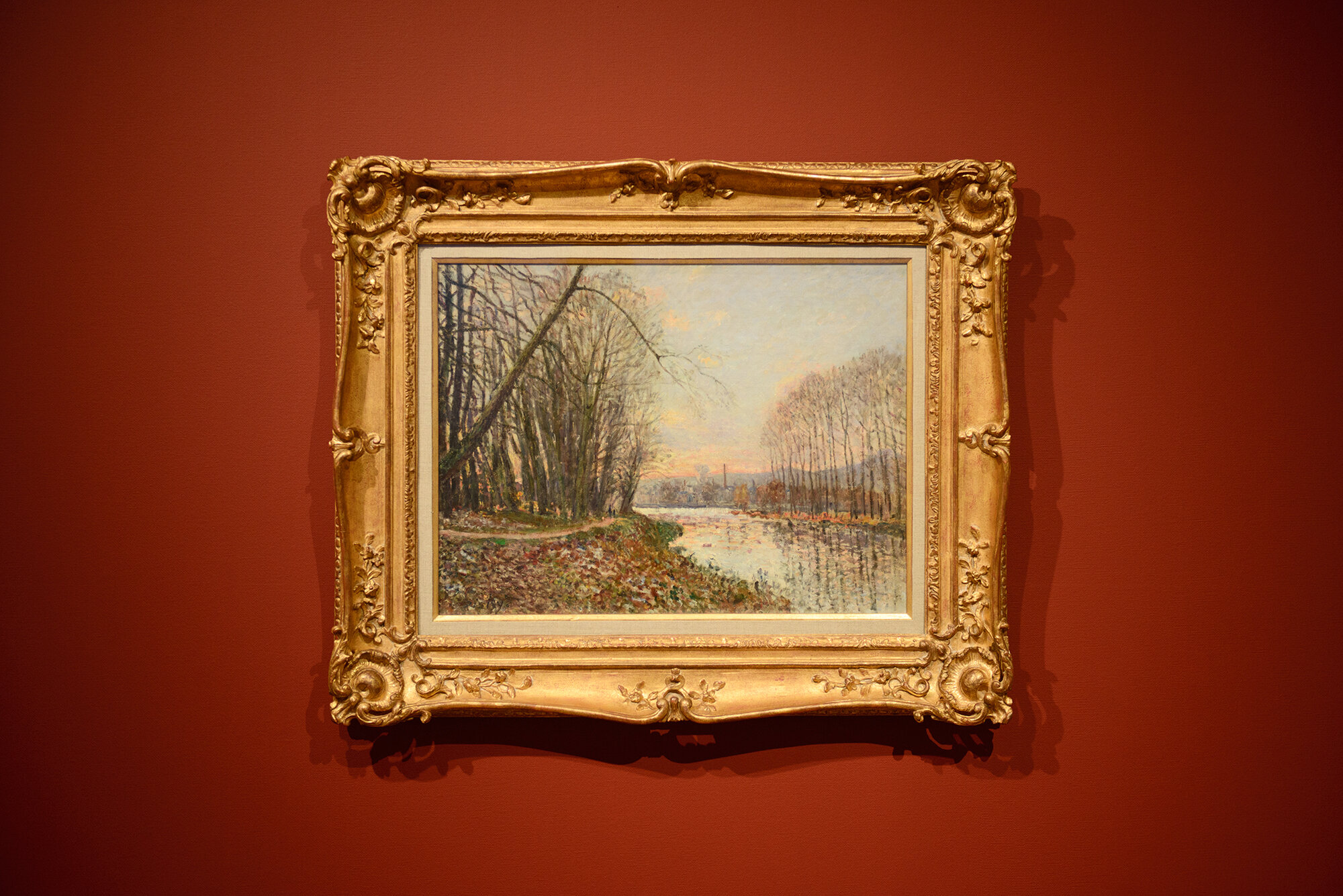
Alfred Sisley, Winter Sunset (The Seine at Saint-Mammès), c.1882–83
In this series, museum personnel from around Japan shine a spotlight on a favorite piece from their own museum's collection, works that they hope everyone will see and appreciate. In this fourth installment, we visited the Tochigi Prefectural Museum of Fine Arts, which celebrated its fiftieth anniversary in 2022. In addition to works by artists with ties to Tochigi Prefecture, the museum also has a large collection of modern and contemporary Western art. Curator Buseki Sae chose a new addition to the collection as her “favorite piece.”
Connecting Western art with Tochigi-associated works
- Curator Buseki’s thoughts about her favorite piece
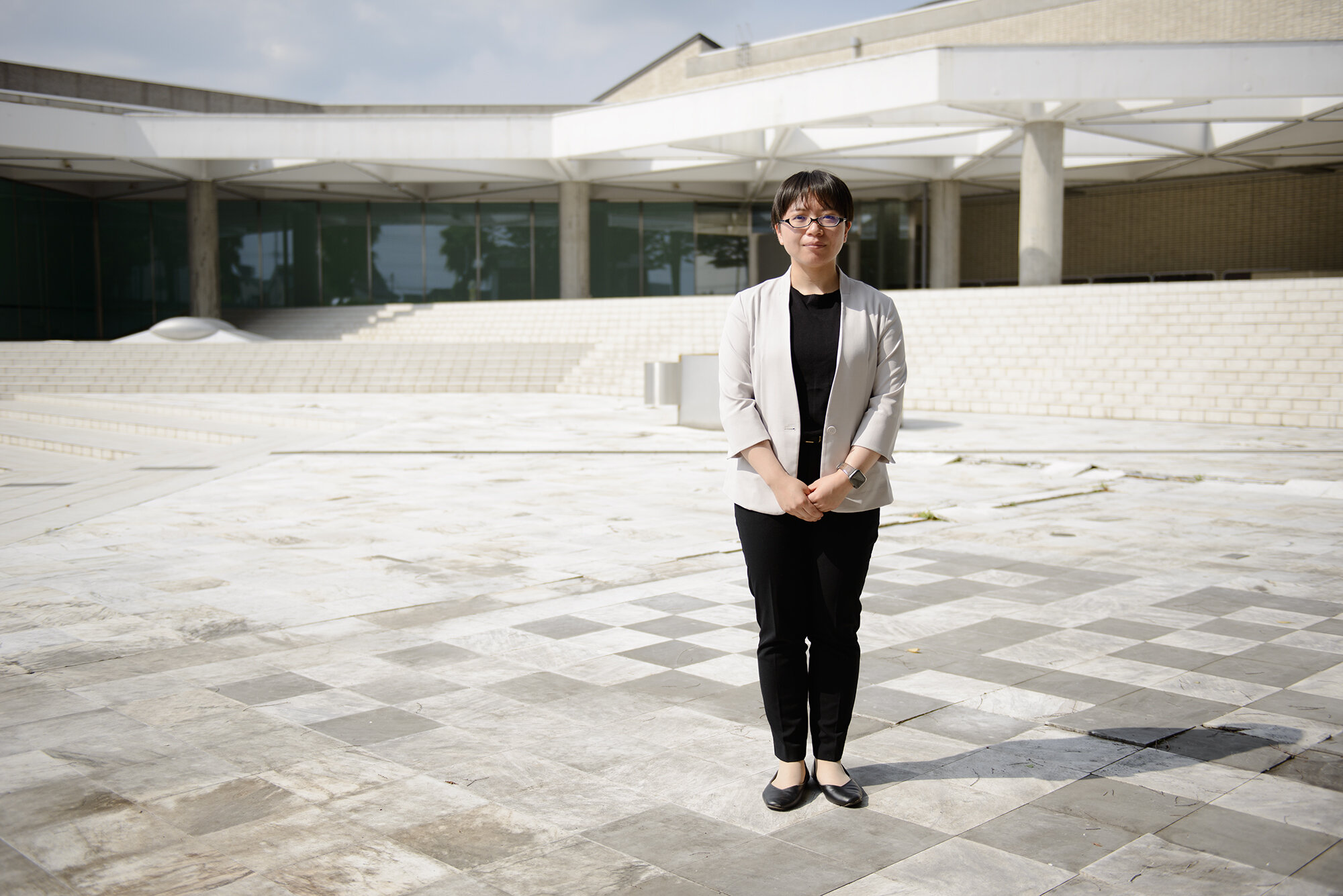
Curator Buseki Sae in the outdoor exhibition space at the Tochigi Prefectural Museum of Fine Arts
Nineteenth century landscape paintings are a cornerstone of the museum’s collection
The Tochigi Prefectural Museum of Fine Arts was one of the first public museums of modern and contemporary art in Japan when it opened in 1972. With the museum celebrating its fiftieth anniversary in 2022, and Tochigi Prefecture celebrating its 150th anniversary the following year, the museum embarked on research with the aim of acquiring works that would please Tochigi people and attract attention. The Tochigi Prefecture Art Acquisition Fund, which the museum uses to purchase art, was enlarged for the first time in twelve years. In the process of researching available works, the museum received specific information about artworks from the National Museum of Western Art, leading the Tochigi Prefectural Museum of Fine Arts to decide to purchase the work that Buseki has selected here as her “favorite piece.” It is Winter Sunset (The Seine at Saint-Mammès), an oil painting by the nineteenth century Impressionist painter Alfred Sisley (1839–1899). Curator Buseki shared her thoughts about the work with us.
“Nineteenth century English and French landscape paintings are the cornerstone of our collection of Western art. The museum's collection also includes works by William Turner and John Constable, two of the most important British landscape painters of the nineteenth century, as well as Camille Corot, a French painter. Sisley was born in Paris to British parents, and it is said that when he moved to London at the age of seventeen he became enraptured by the works of Turner and Constable and decided that he wanted become a painter. Sisley had ties to both Britain and France, and later built a career as a painter in France. We thought that this work would serve as a connection between the British and French art in our collection, which is why we decided to purchase it."
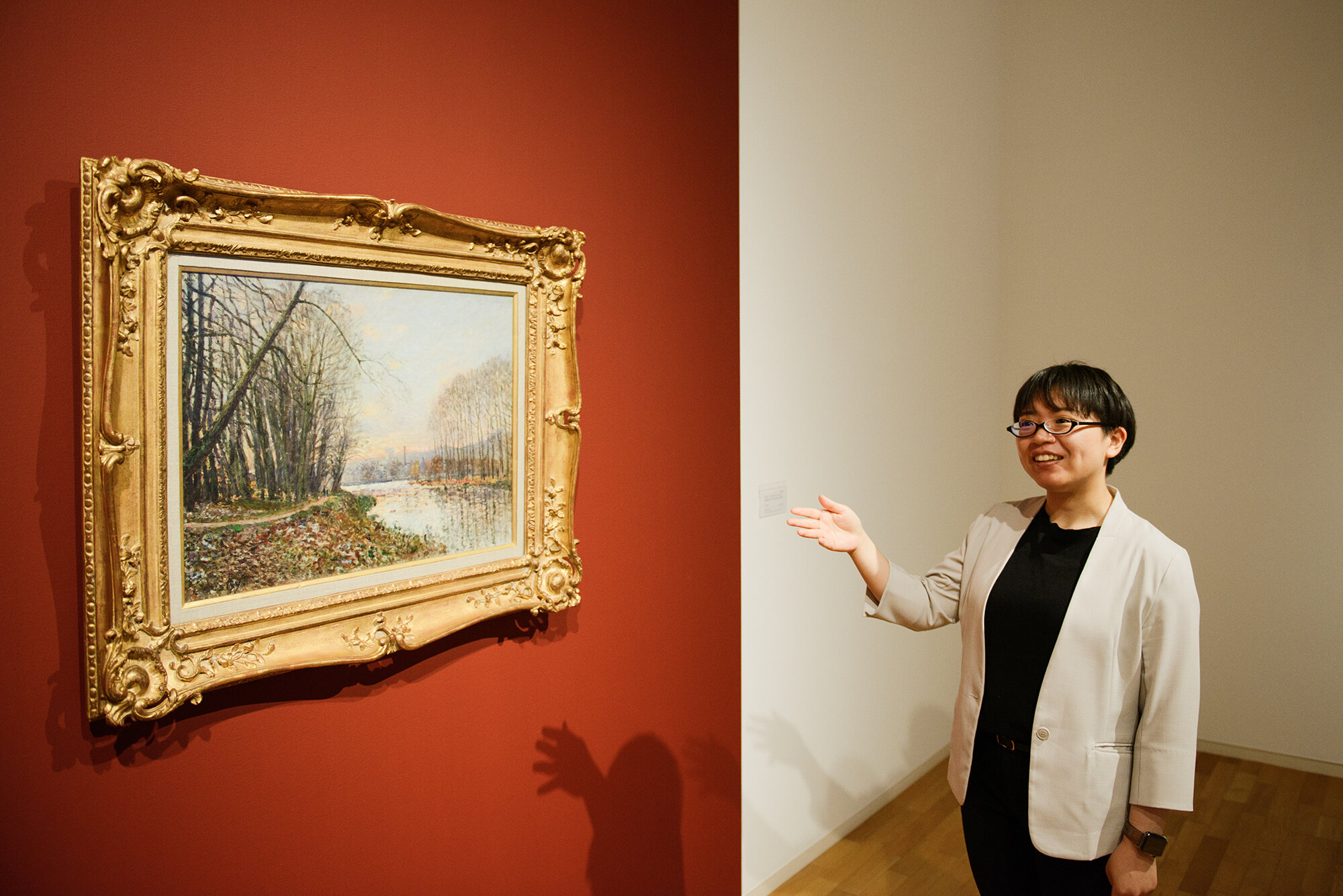
“Smoke is rising from the chimney depicted at the back of the scene, letting us know that this was dusk rather than dawn. The Impressionist technique of brushstroke division is used to depict the setting sun reflected in the water's surface and the shadows of the trees," explains Buseki.
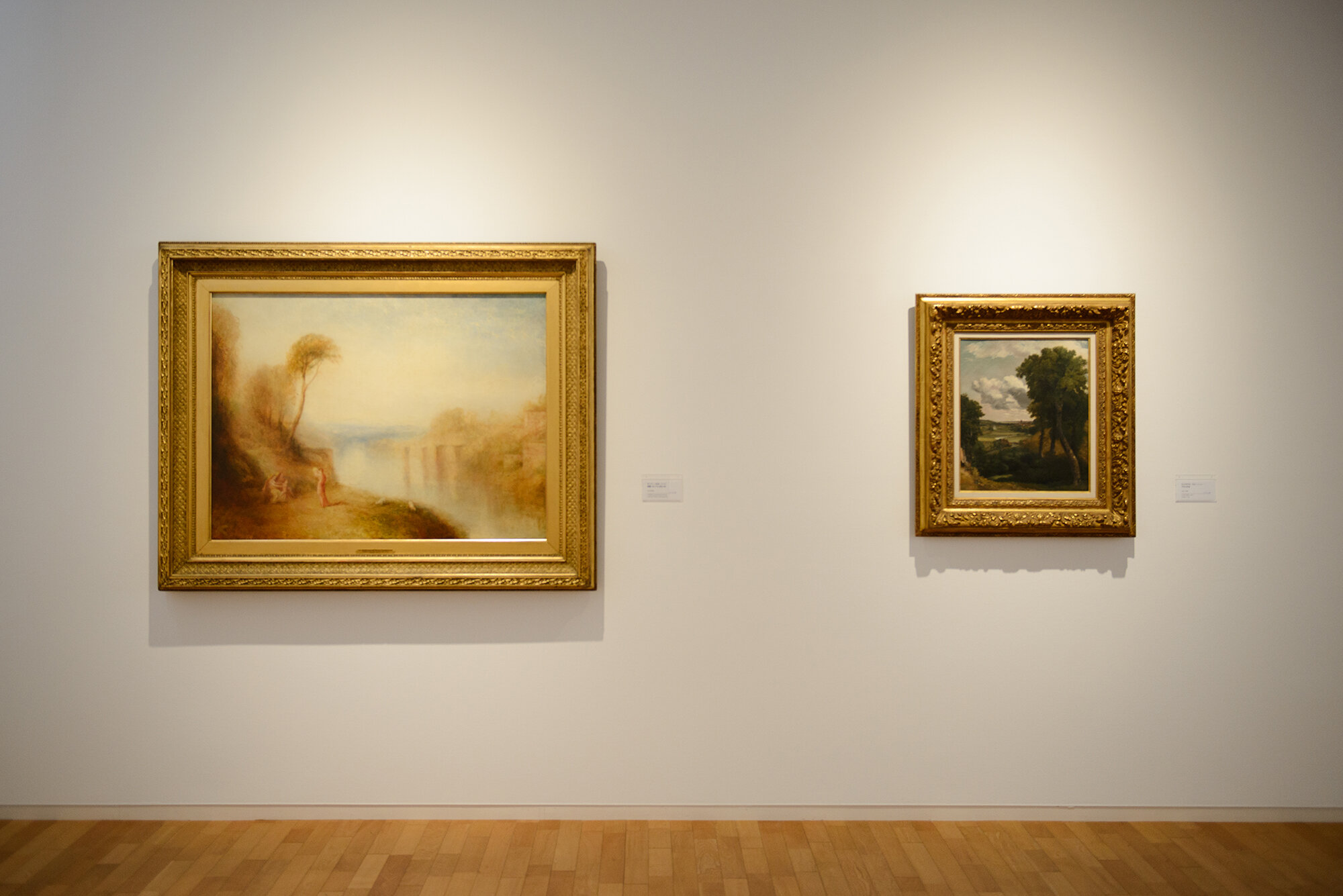
From left: Joseph Mallord William Turner, Landscape: Woman with Tambourine, c. 1840–1850; John Constable, Dedham Vale, c. 1805–1817 (Exhibition photo: Collection Exhibition I: Art of Beginning, April 20–June 16, 2024)
The “favorite piece” is a work from the Matsukata Collection
There is a historical connection between the opening of the National Museum of Western Art and Winter Sunset (The Seine at Saint-Mammès) behind the National Museum of Western Art's suggestion of the piece. The National Museum of Western Art opened in 1959. The impetus for the founding of this museum was the vast number of paintings and sculptures acquired in Europe by businessman Matsukata Kojiro (1865–1950) over a period of about ten years starting in 1916. Driven by a desire to build a museum in Japan to expose young artists to real Western art, Matsukata collected the works that later became known collectively as the Matsukata Collection.
However, the situation changed dramatically with the Showa Financial Crisis of 1927. The Matsukata Collection was scattered when the works he brought back to Japan were seized by banks to settle the debts of his company, and works that were stored in London were destroyed in a fire in 1939. Furthermore, works that had been put in safekeeping at the Rodin Museum in Paris were confiscated by the French government as enemy property during World War II. After the San Francisco Peace Treaty was signed in 1951, The Japanese and French governments continued to negotiate, and in 1955 it was decided that the Matsukata Collection would be given back to Japan on the condition that the Japanese side would establish a museum of French art in Tokyo.
Some 370 paintings and sculptures returned by France served as the foundation for the establishment of the National Museum of Western Art. However, many of the Matsukata Collection works had been dispersed before then, and are now in the possession of museums and collectors around the world. Sisley’s Winter Sunset (The Seine at Saint-Mammès), the “favorite piece” of this installment, is one of the works that was in the old Matsukata Collection. The fact that this work is connected to Japan and the fact that Sisley is an important Impressionist painter whose works are not often found in the collections of Japanese art museums make this piece a significant addition to the collection of the Tochigi Prefectural Museum of Fine Arts.
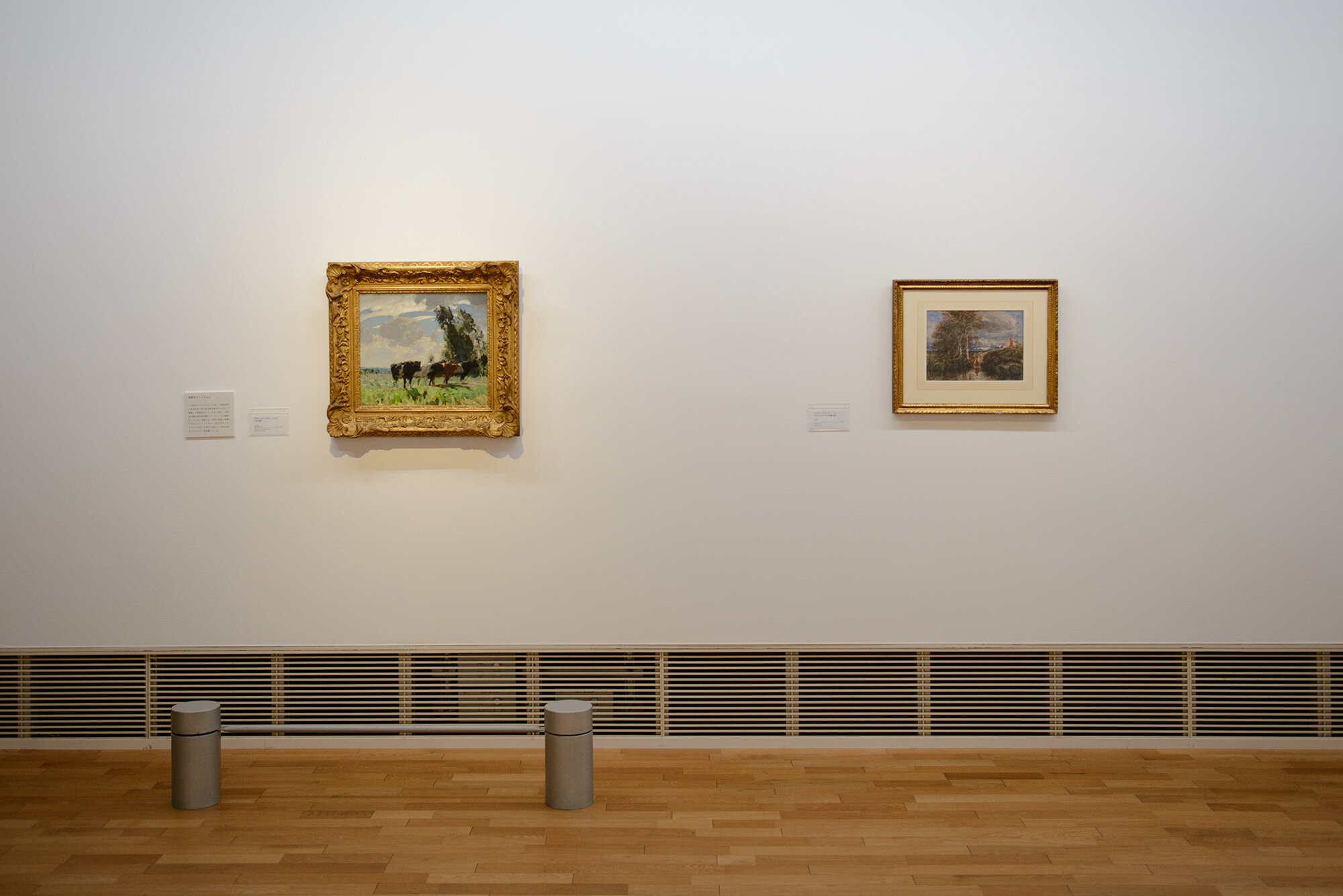
Before Winter Sunset (The Seine at Saint-Mammès), the Tochigi Prefectural Museum of Fine Arts had acquired two other works from the old Matsukata Collection. From left: Arnesby Brown, September Morning, c.1910s; David Cox, Washing Day, c. 1840 (Exhibition photo: Collection Exhibition I: Art of Beginning, April 20–June 16, 2024)
Museum visitors have said that it looks like home
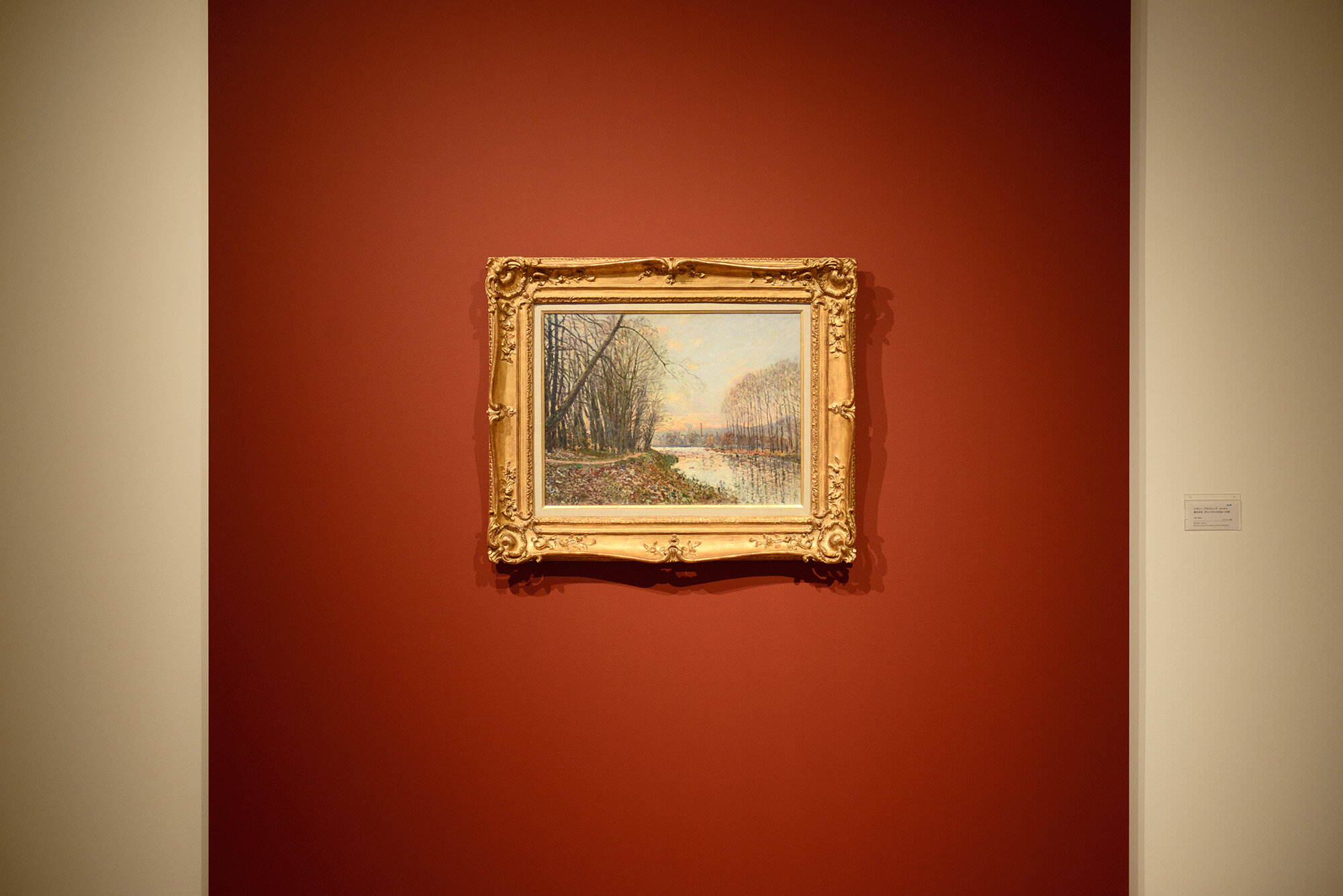
Alfred Sisley, Winter Sunset (The Seine at Saint-Mammès), c.1882-83
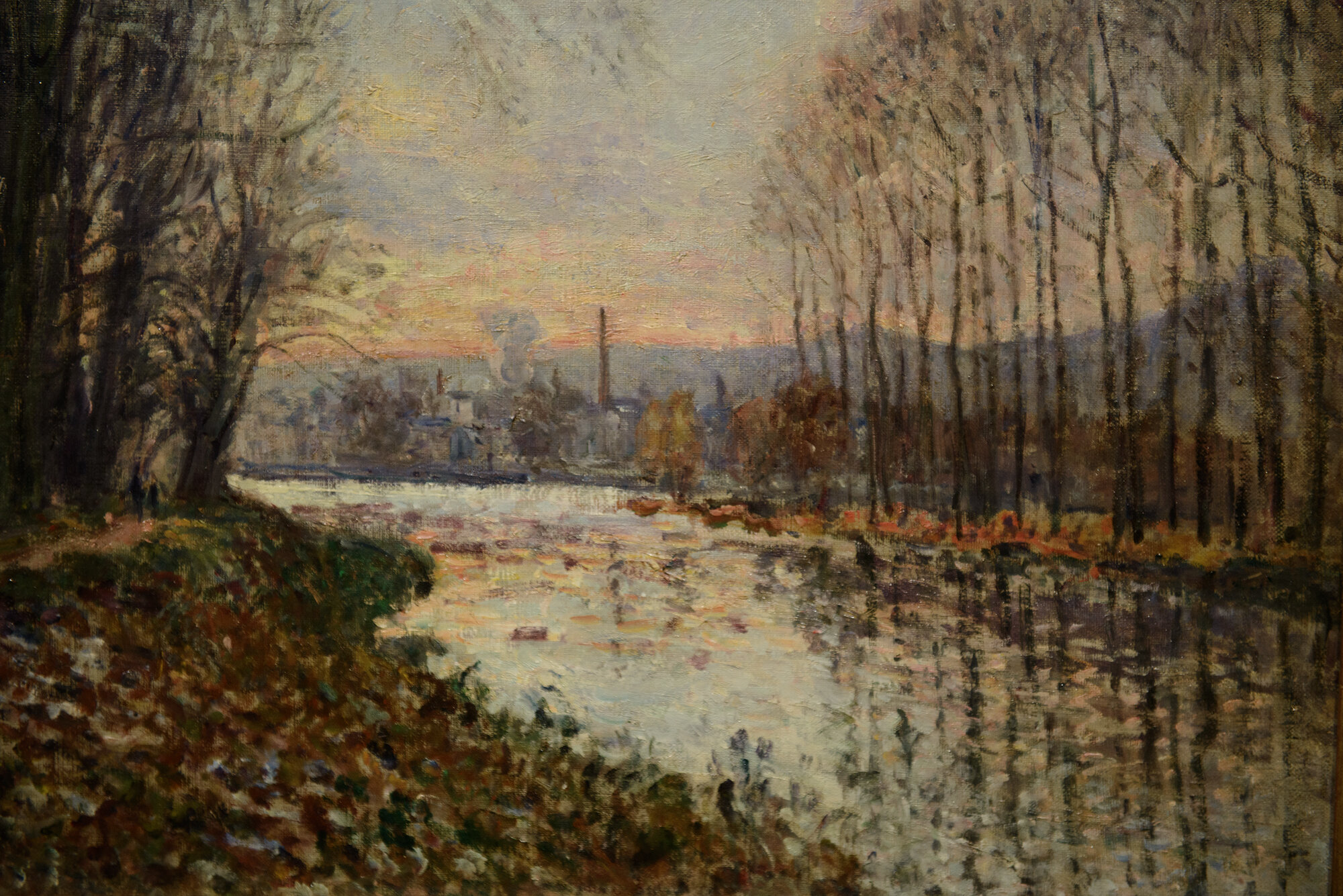
Alfred Sisley, Winter Sunset (The Seine at Saint-Mammès), (closeup) c.1882-83
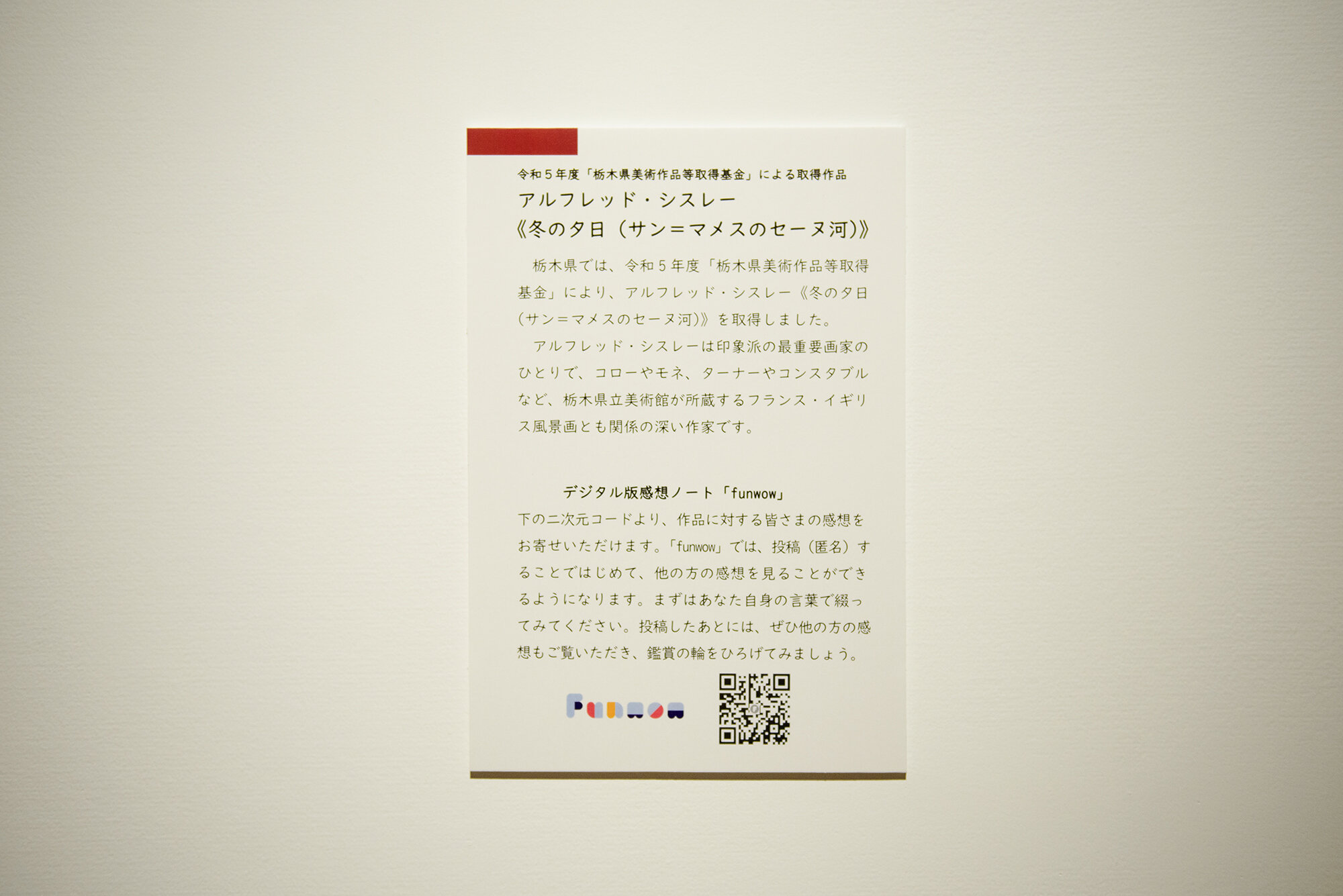
The museum is trying out an external service that allows people to share their thoughts about the work online, and it has collected many posts from visitors.
Winter Sunset was accessioned in 2023. When it was unveiled at a collection exhibition in April 2024, Buseki was surprised by the number of visitors who commented that the painting looks similar to the scenery of Tochigi Prefecture.
“Landscape paintings tend to be works that evoke a feeling of nostalgia. In particular, there are many nineteenth century French and English works that depict riverbanks and forests. Japan is a country that is blessed with many rivers, and Tochigi has many areas awash in lush greenery. Maybe visitors to the museum saw Sisley's works as reminiscent of familiar landscapes, and this brought out feelings of nostalgia and closeness."
As with special exhibitions, Tochigi Prefectural Museum of Fine Arts changes the theme for collection exhibitions with each session. Consequently, Winter Sunset will not be on permanent display, but the museum has decided to keep it in the collection exhibition room until the end of 2024.
An interest in the hues of landscape paintings
Buseki majored in art history at university, and when we asked her about her area of expertise, she replied that it was ancient Roman art.
"When it comes to the art from the Roman Empire of about 2,000 years ago, the murals of Pompeii—which were buried under volcanic ash after the eruption of Mount Vesuvius—are famous. When I first saw them, I was struck by how the colors from back then remain vivid even today. Within the murals from Roman times, I have focused my studies on landscape paintings, and I have an interest in the hues used to paint these landscapes. Since the colors used to depict landscapes are an essential part of art regardless of era or location, it might be fair to say that modern and contemporary landscape paintings are viewed from the same perspective as ancient Roman murals.”
Connecting Western art with Tochigi-associated works
Last year (2023), Tochigi Prefectural Museum of Fine Arts was chosen for the 2024 National Museum of Art “Collection PLUS”, a public initiative in which the National Center for Art Research collaborates with art museums across the country to take advantage of the collections housed at the National Museum of Art. The project was submitted by Buseki, and she focused on the relationship between the Tochigi-born painter Osakabe Jin (1906–1978) and the French Realist movement painter Gustave Courbet (1819–1877).
“Osakabe Jin is a painter who mounted two solo exhibitions at this museum. The similarities between Courbet and Osakabe in terms of subject matter have been noted for some time, but when I actually saw Courbet's work at the National Museum of Western Art in connection with this project, I felt that the images made with a palette knife were even more sharp than I had seen in photographs. A similar approach can be seen in Osakabe’s work, and this made me realize that Courbet’s influence extended to artistic techniques. When I interviewed Osakabe’s family about his life, they told me that he had admired Courbet, and when they showed me the notebooks for his work, there was a page on which he had written ‘Paint cliffs like those at Étretat [note].’ I am using this exhibition as an opportunity to systematically organize these materials and works and further our research."
The project selected for National Museum of Art “Collection PLUS” will be shown at Tochigi Prefectural Museum of Fine Arts from October 26 to December 22, 2024 as Collection Exhibition III “Osakabe Jin and Gustave Courbet: The Eyes of Landscape Painters.” Works by Osakabe Jin that are in the collection of the Tochigi Prefectural Museum of Fine Arts will be displayed alongside two works by Courbet from the collection of the National Museum of Western Art, Waves and Snow Landscape.
The Tochigi Prefectural Museum of Fine Arts not only houses many works connected to Tochigi Prefecture, but it also focuses on the history of Western art. Visitors to the museum can appreciate the connections between various forms of artistic expression, old and new, East and West.
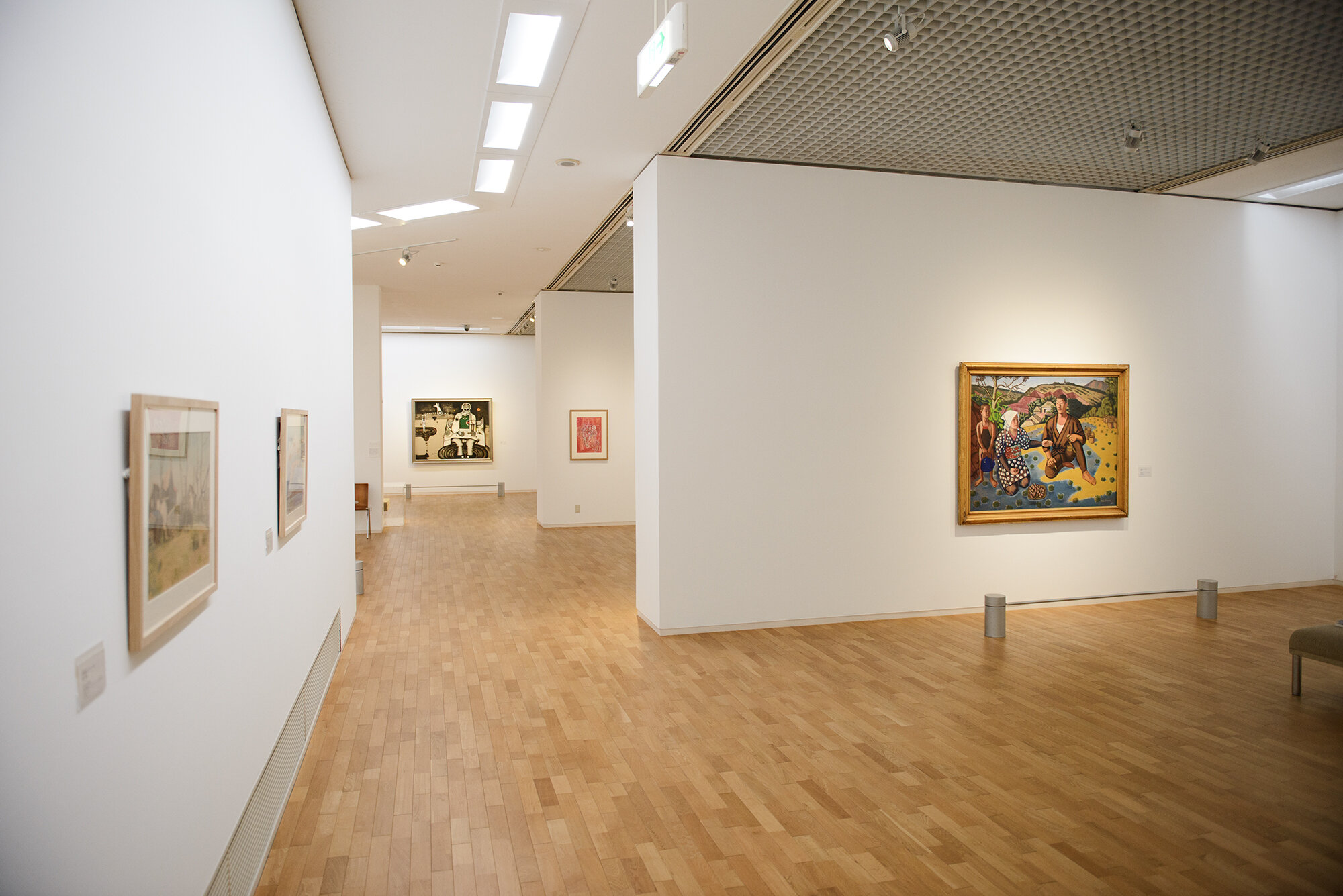
(Exhibition photo: Collection Exhibition I: Art of Beginning, April 20–June 16, 2024)
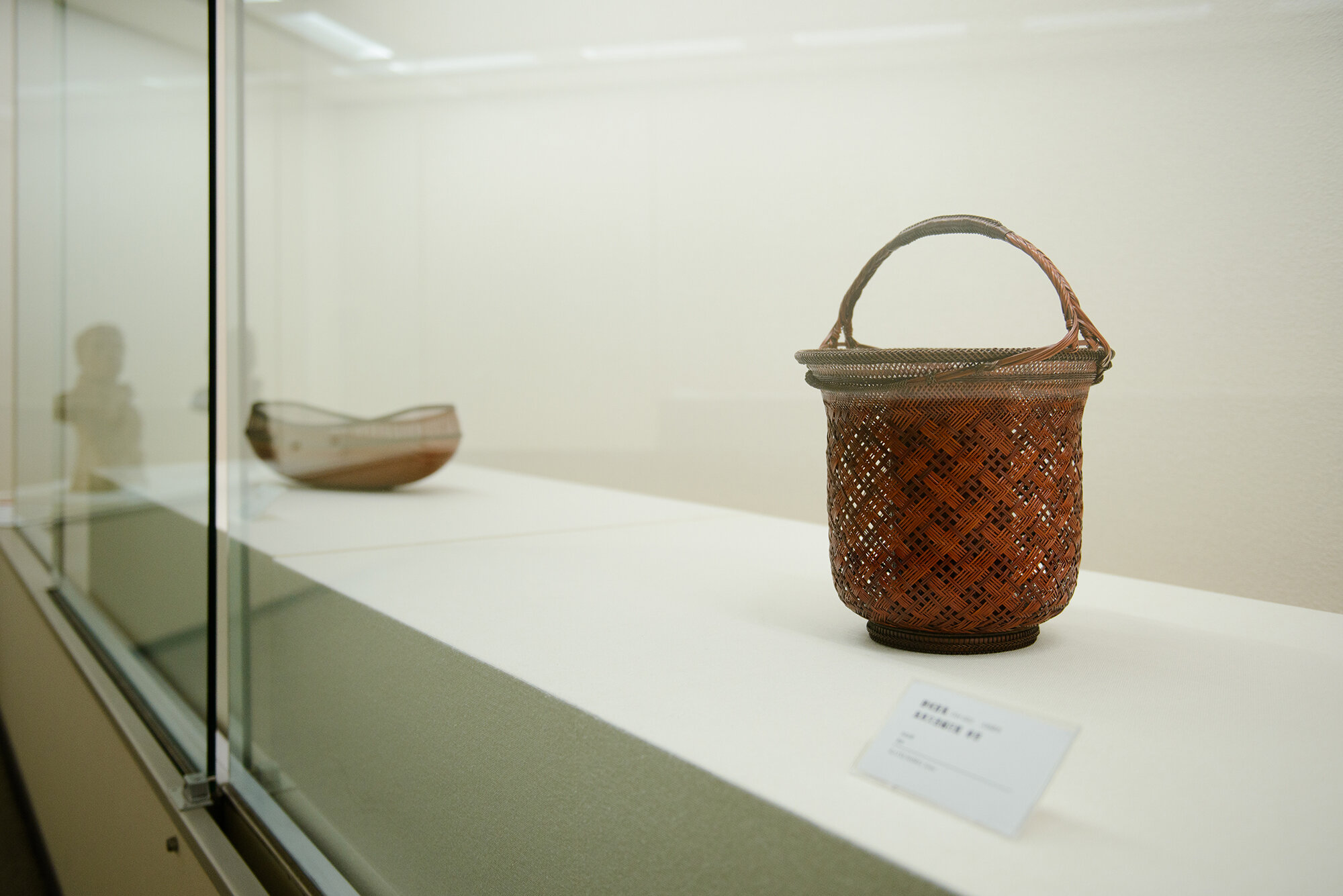
Collection exhibition room displaying many works by artists with ties to Tochigi Prefecture. Foreground: Flower basket in openwork with windmill design. "Haruomoi," 2008 (on loan to the Tochigi Prefectural Museum of Art), by Tochigi-born Katsushiro Soho (1934–2023), Holder of Important Intangible Cultural Heritage for his bamboo work (Living National Treasure). (Exhibition photo: Collection Exhibition I: Art of Beginning, April 20–June 16, 2024)
Note: Étretat is a place on the Normandy coast of France where Courbet repeatedly painted the cliffs.
Curator Buseki’s thoughts about her favorite piece
Buseki explained to us why she selected Sisley’s Winter Sunset (The Seine at Saint-Mammès) as her favorite piece.
“Visitors to the museum have commented that the actual work is brighter than it appears in the video footage and photographs shown in news reports. I think that the brightness of the canvas is one of the characteristics of Impressionism. When I saw the actual painting up close for the first time, the orange hues of the setting sun shimmered on the surface of the water, and the brushstrokes–which tend to look blurry in images of the painting–drew my eye. I want everyone to come and see the actual painting at our museum, so I selected it as my “favorite piece.”
Buseki Sae
Born in Tochigi Prefecture, Buseki has worked as a curator at the Tochigi Prefectural Museum of Fine Arts since 2021. She has previously been responsible for mounting 50th Anniversary: Collection of Tochigi Prefectural Museum of Fine Arts and Encounters with Impressionism: From the Hiroshima Museum of Art Collection (both in 2022). She is enrolled in a doctoral program and is currently writing her dissertation.
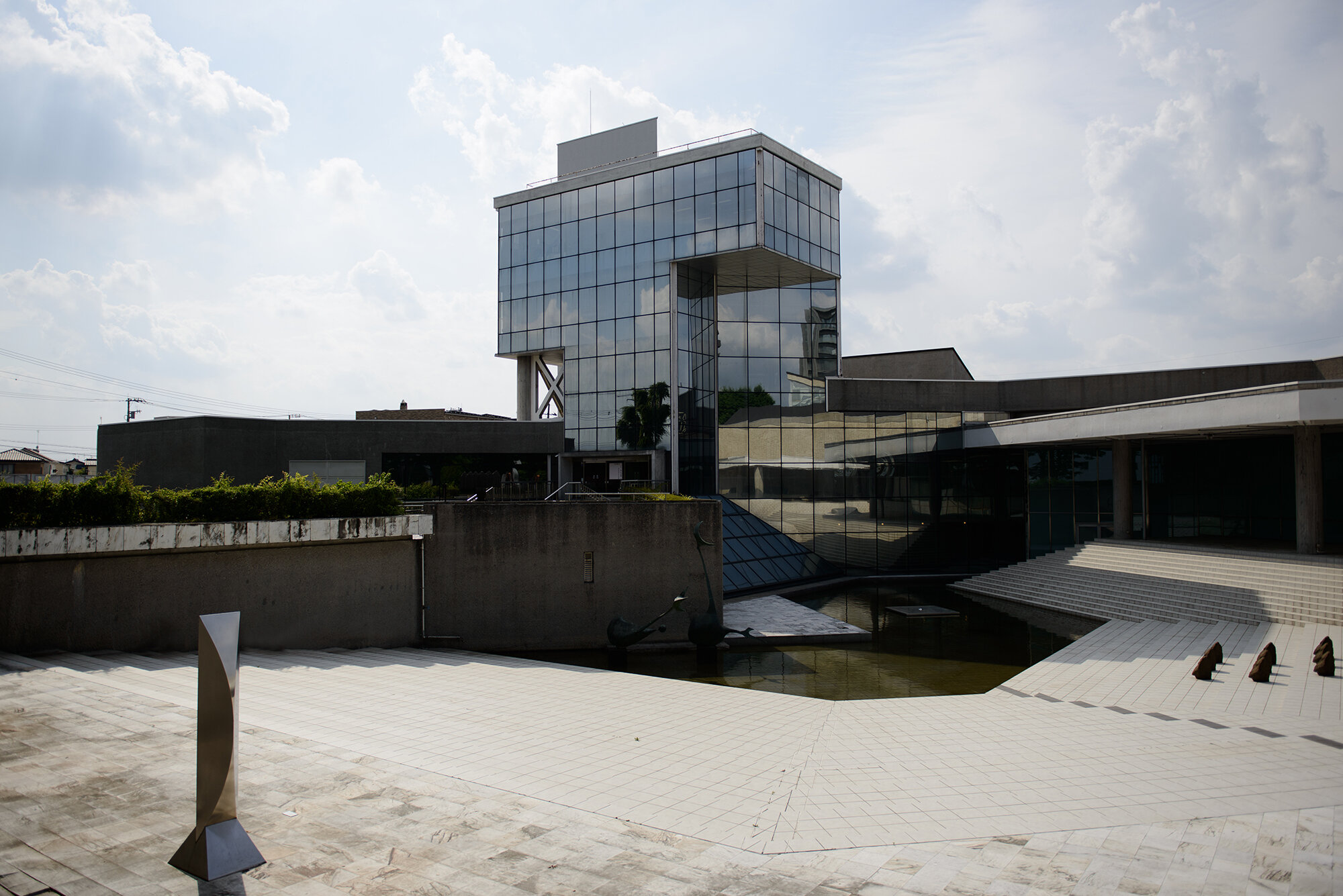
Tochigi Prefectural Museum of Fine Arts
4-2-7 Sakura, Utsunomiya-shi, Tochigi Prefecture
Tel: 028-621-3566
https://www.art.pref.tochigi.lg.jp/en/index.html
Interview and photographs by Nakajima Ryohei







